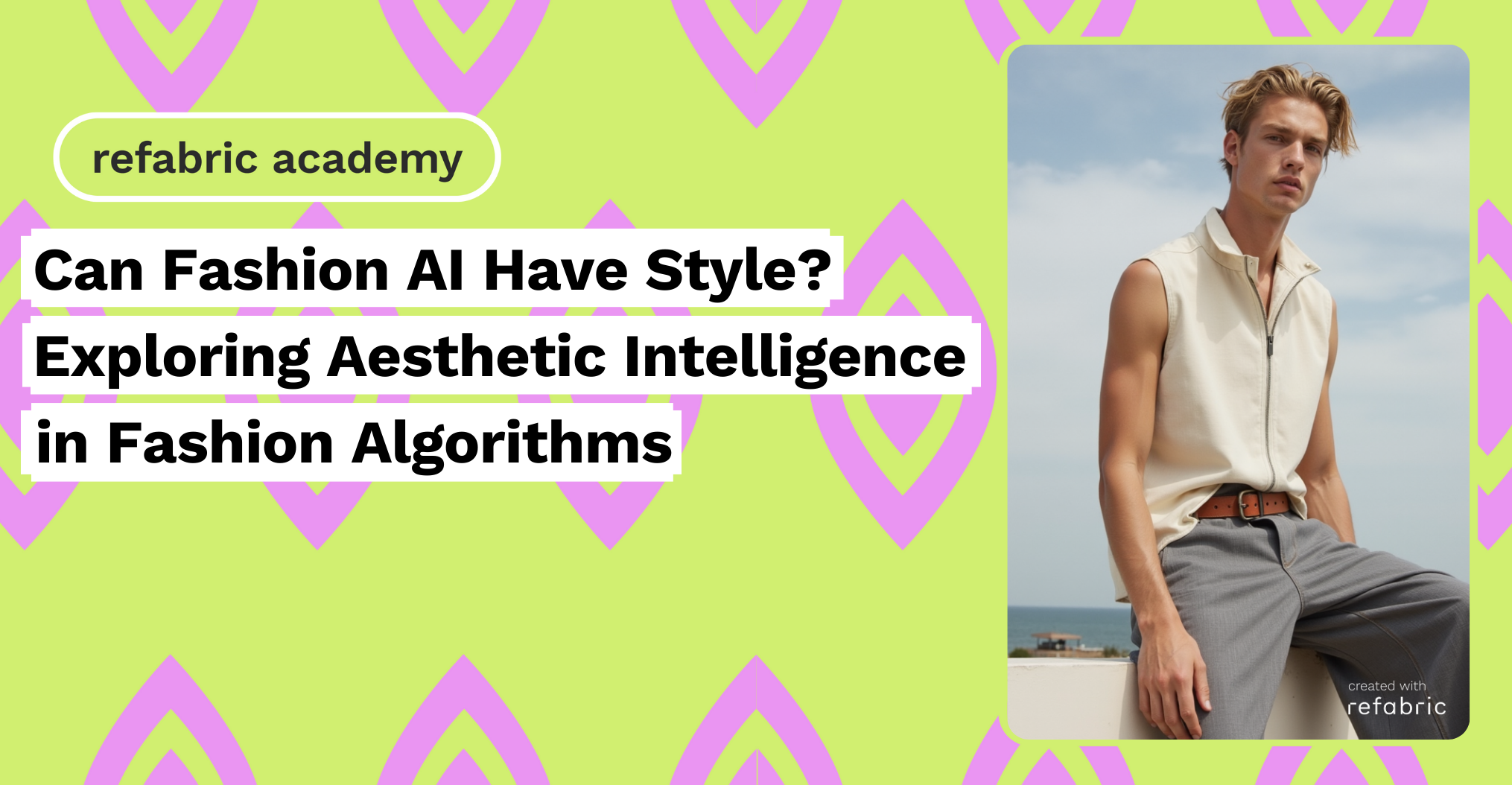Fashion AI is no longer just a backend tool for streamlining production or predicting trends, it’s stepping into the creative spotlight. As algorithms become more involved in generating designs, curating looks, and personalizing shopping experiences, a critical question emerges: can fashion AI truly have style?
This question taps into a deeper conversation about the role of machines in creative industries. Can an algorithm understand beauty, taste, or cultural nuance the way a human can? And if it can’t, should it even try?
What is Aesthetic Intelligence?
To explore whether fashion AI can have style, we first need to understand the concept of aesthetic intelligence. Often referred to as the ability to recognize, interpret, and create beauty, aesthetic intelligence goes beyond basic functionality. It’s about understanding form, texture, proportion, color, and emotional resonance.
In fashion, style isn’t just about following trends, it’s about expressing identity, telling stories, and evoking emotion. Designers use intuition, experience, and cultural context to make decisions that feel right. Can fashion AI replicate that? Or is it simply mimicking existing patterns?
Fashion AI is Learning the Language of Style
While fashion AI doesn’t have intuition in the human sense, it’s becoming increasingly adept at learning the rules of style through data. By analyzing thousands of runway collections, fashion editorials, social media posts, and customer preferences, fashion AI can identify what combinations work and which ones don’t.
More impressively, some fashion algorithms are now being trained on aesthetic parameters like symmetry, contrast, visual harmony, and even emotional tone. They’re beginning to understand that a sharp-shouldered jacket conveys power, while a flowing silhouette suggests ease and grace. As a result, AI-generated designs are starting to exhibit not just coherence, but character.
Projects like Refabric, which empower designers with AI-assisted tools, demonstrate how these systems can support creative expression rather than replace it. By generating variations of prints, silhouettes, and patterns based on trend data or brand DNA, fashion AI becomes a collaborator, offering creative suggestions while leaving the final decision to the human eye.
Refabric’s Train Brand Identity feature allows users to capture the unique stylistic DNA of their brand by training AI models on branded imagery and seasonal mood data. This means the resulting AI-generated outputs can reflect the brand’s authentic voice and visual codes whether minimalist and clean, maximalist and ornate, or something entirely in between. By enabling the training of tailored AI through house codes, designers can ensure their brand’s identity remains consistent, distinctive, and forward-thinking, even as they experiment with new ideas.
When Data Meets Emotion
Fashion is deeply emotional. Our choices of what to wear are tied to memory, mood, aspiration, and identity. This is where AI still faces challenges. While it can process data at incredible speed and scale, it lacks lived experience. It doesn’t know what it feels like to wear something that makes you feel powerful, or nostalgic, or seen.
That said, AI is improving at interpreting emotional cues through behavioral data. It can recognize that shoppers gravitate toward certain color palettes in winter, or that a rising generation leans toward styles that challenge gender norms. By tracking patterns and feeding them into generative models, fashion AI can design pieces that resonate emotionally, even if it doesn’t “feel” anything itself.
The Future of Fashion AI: A New Kind of Taste
As fashion AI evolves, so does our understanding of taste. Instead of a fixed set of rules or personal bias, AI introduces a kind of collective intelligence—a mirror of millions of micro-preferences and cultural references woven together. In this way, AI’s version of style isn’t static, it’s fluid, scalable, and deeply reflective of our current culture.
But will it ever replace human creativity? Unlikely. True style comes from a blend of instinct, innovation, and imperfection. AI can analyze and suggest, but it still relies on human designers to add soul, context, and meaning.
So, Can Fashion AI Have Style?
The answer is: yes, just not in the same way humans do. Fashion AI can learn and replicate style with increasing sophistication. It can identify beauty, offer creative ideas, and democratize design. But its “style” is the sum of the data it learns from, not the result of a lived experience or a spark of emotion.
In the end, fashion AI isn’t here to replace human taste, it’s here to challenge, enhance, and evolve it. And maybe that, in itself, is the most stylish move of all.
